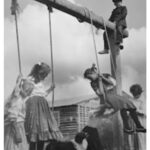
It was an era when one-room schoolhouses dotted the landscape, serving as beacons of learning for remote communities.
These humble structures, with a single teacher at the helm, provided a foundation for countless young minds, fostering a sense of unity, resilience, and camaraderie among students of all ages.
Montana’s pioneer single classroom education system epitomized the spirit of the frontier. In a world far removed from the bustling cities, students from various grades shared the same space, their desks forming a microcosm of society.
Older children took on mentorship roles, guiding their younger peers, while the teacher, often the sole source of formal education, juggled the diverse needs of the classroom.
The curriculum was simple yet robust, covering reading, writing, arithmetic, and practical life skills. Beyond the textbooks, these one-room schoolhouses instilled values of self-reliance and community cooperation.
The school was not just a place of learning; it was a cornerstone of the community, hosting gatherings, celebrations, and social events.
As time marched on, modernization led to the consolidation of schools, and the one-room schoolhouses gradually faded into history.
Yet, the legacy of Montana Pioneer single classroom education endures, reminding us of a bygone era when education was a testament to human adaptability and perseverance.
Today, these schools serve as museums, preserving the memories and stories of an era when a single classroom was the gateway to knowledge, the heartbeat of a community, and the crucible where young Montanans forged a shared identity that would last a lifetime.










Leave a Reply